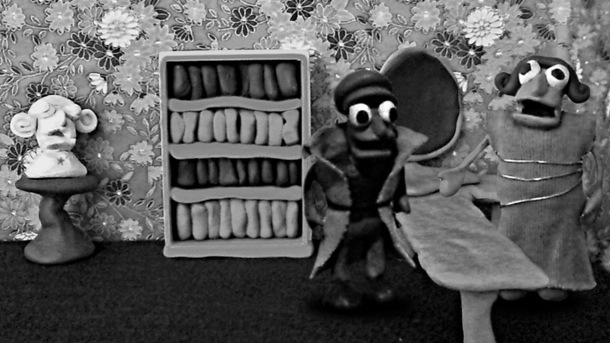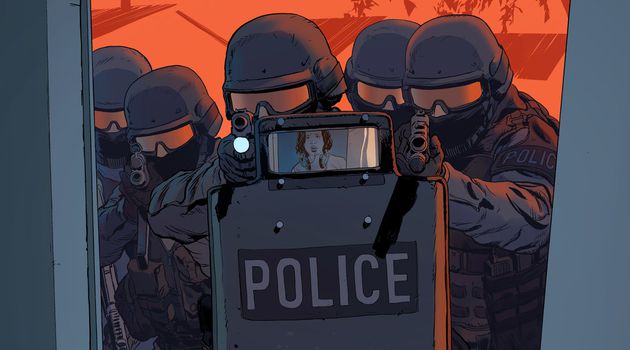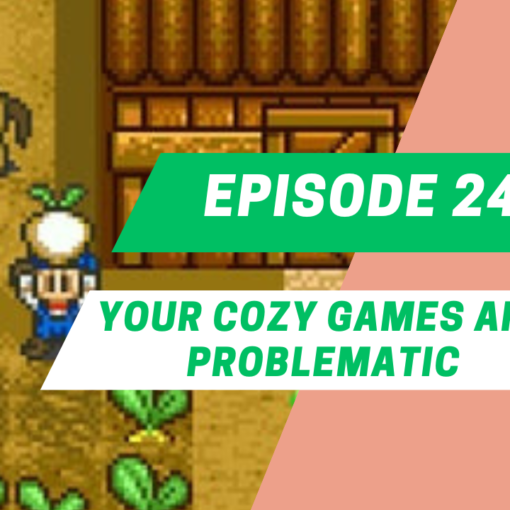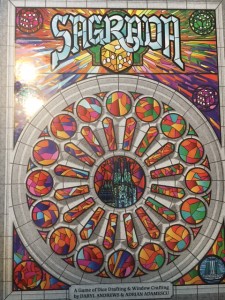
I know in a previous post I set out to review the top 30 board games ala Board Game Geek, starting with Food Chain Magnate. I have to deviate from that a little bit because of a new game I tried and fell in love with at a game night at my local game store. The game is called Sagrada. For those who were like me, you may not know what a Sagrada is, and you might have never heard of this game. It barely ranks in the top 1000 on BGG, though it is also very recently released, having been successfully kickstarted in 2016. You may have seen it if you attended Gen Con 2016 as well. I do believe it has a chance of making the top 30 some day, so this may just be a very premature top 30 review. If you dig board games, especially games that are artistically engaging and strategy-oriented (as opposed to fighting, killing, and looting), then please read on to learn more about this super cool game.
Theme
So what is a Sagrada? The Sagrada Família is a large cathedral under construction in Barcelona. While I may in fact burst into flames if I walk in front of an actual cathedral, this game is not actually religion-related in any way. The theme of the game is that players take on the role of an artisan stained glass craftsman working on construction of masterpieces for the Sagrada Família. For those who love a bit of beauty with their board games, the simple, colorful visuals and engaging theme really should put Sagrada on the top of your list in terms of current favorites.
Gameplay
So the game itself is a fairly simple dice drafting game. Players take turns choosing dice to decorate their respective windows. Windows are drawn at random at the beginning of the game, and each quadrant has unique color and number requirements. There are three random “tools” that allow special plays and three victory point goals placed face-up as well. Tools could be things like you can pay a token to raise or lower the drafted dice value by 1 (you get tokens based on how difficult your particular window layout is). Goals are things like you get 5 victory points for not having any repeating number in a completed row at the end of the game. There are ten rounds total, and each player drafts two dice per round.
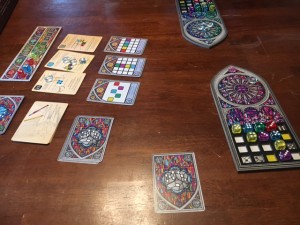
The games tend to take around 25 minutes, depending on how well everyone knows the rules and how distracted people are while playing. It’s actually a nice game to play with a distracted group, because you don’t need to be constantly watching other people take their turn. You can do a bit of strategizing while others are taking their turns, but you can’t really control what dice you get to choose from (there are some reroll “tools” and other things that change the dice). Thus, it’s a nice game to sit back and have a snack during or carry on a conversation. There are several other nuances to the rules, but that should give you a good feel for the deceptively simple gameplay.
Similar Games
This is totally subjective, but I can think of four games that aren’t necessarily similar in construction, but that are similar in the way they engage the player and your brain: Roll for the Galaxy, Chess, Hounded, and Sudoku.Roll for the Galaxy is one of my all-time favorite games. It is also dice-based, though I would argue it takes a very different approach to “drafting.” The core mechanics are the same, however: you have to collect dice and use them strategically to develop your worlds. You do need to have some strategy and forethought as well, which of course is what makes the game challenging. The other game the came up again and again while I was playing Sagrada with different people is Chess. Chess, as I imagine everyone knows, takes an incredible amount of forethought and strategy (i.e. if I move this here, then this here, then my opponent can move that there, etc… at least that’s how my brain works when I play Chess). Hounded is another Chess-like game that I’m currently obsessed with, and it overlaps Sagrada is a similar way. Finally, I kept thinking of Sudoku while playing Sagrada because of the restrictions about which colors and numbers can go where. Further, you may have goals like no overlapping colors in a row or now overlapping numbers in a column. This is very similar to the thought processes that go into a game like Sudoku. I think if anyone enjoys these games, you should give Sagrada a try.
Why This Game
This is one of my current favorites for two reasons: it’s easy to learn, and it has a ton of replayability. There is seemingly endless strategy i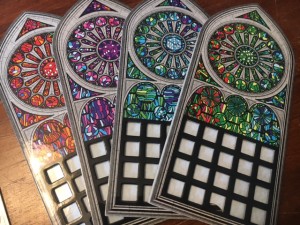 n the game, and so far each time I’ve played it I’ve done something completely different. The games have always unfolded differently, sometimes with most players completing the goals, sometimes all players have an epic meltdown. If you love narrative games, this might not be a great choice for you. However, if you want something easy to learn and difficult to master, this is a great choice. It also has a pretty solid solo version. And for those with kids, this is a good, clean critical thinking game.
n the game, and so far each time I’ve played it I’ve done something completely different. The games have always unfolded differently, sometimes with most players completing the goals, sometimes all players have an epic meltdown. If you love narrative games, this might not be a great choice for you. However, if you want something easy to learn and difficult to master, this is a great choice. It also has a pretty solid solo version. And for those with kids, this is a good, clean critical thinking game.


